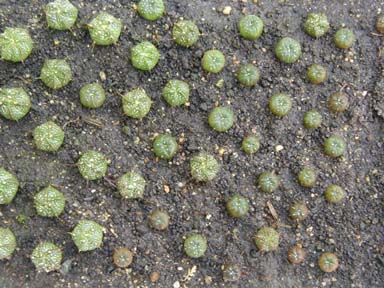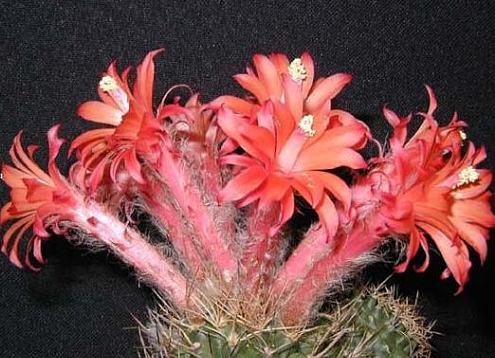BOTANICAL GARDEN OF THE URALS STATE UNIVERSITY (Ekaterinburg, Russia)
By Igor Skoulkin, Ph. D
Photo: Igor Skoulkin and Valery Kalishev
Translated from Russian by Andrey Romanov
Succulent collection of the Botanical garden in the Urals State University (BG UrSU) was founded in 1993, when the greenhouse "for educational purposes" (approximately 300 sq. m) was built at last. It must be said that probably it was the worst time for the foundation of a new collection in Russia. The country experienced really a hard time, and it seemed there was no need for greenhouses, botanic gardens in universities and universities themselves. As a result, the newly built greenhouse had been staying almost empty for some time.
Then step by step our greenhouse became filled with various species of indoor plants, mostly with cacti and succulents. Many hobbyists from Ekaterinburg and other regions of the country gave us a hand by bringing and posting cuttings, seedlings and even adult plants, which became too big to grow in small flats.*
 Photo 5.
Photo 5. 'Super Kabuto' seedlings
In 1994-99 we have obtained many specimens from abroad as well, e.g. cuttings of Asphodeliaceae from Nikitsky Botanical Garden in Yalta, those of Crassulaceae-from Kiev Botanical Garden, species of Rhipsalis-from Berlin, and so on. Hundreds of seedlings had been grown from seeds obtained from Germany (Koehres), France, Switzerland, Poland, Hungary, Romania and other countries.
Now we have a collection of about 750 taxa of succulents, 600 of which are cacti, while 150 are succulents from Crassulaceae and 8 other families. Such genera as Mammillaria (65 taxa), Gymnocalycium (50), Ferocactus (30), Crassula (25) and some others are represented here best of all. Beginning with 1999 we started to pay significant attention to the colored forms of cacti and carried out some experiments with them.**


Photo 6 & 7. Color forms
Every year nearly a half of our plants blooms, and at least the third part of them yields seeds. The season of cacti's blooming usually starts in January-February and is at its maximum in April, not in summer, as one would expect. This seems rather strange in our tough climate, but the explanation is simple-joint effect of hot spring sun and the central heating which is turned off here only in the end of April and sometimes not until the second week of May. In other words, there is more warmth available for cacti in spring in the Urals, than in summer.
 Photo 8.
Photo 8. Submatucana paucicostata in bloom
Visitors are always welcome, but we request to contact us by e-mail before coming.
* Special thanks to Igor Bakhov (Germany), who supplied us with good seeds in 1998-1999, Ph.D. I. Vasiljeva, O. Goncharova, A. Andreev, A. Danilevsky, V. Kalishev, I. Katajeva, I. Khomyakova, Ju. Marchenkov and many other hobbyists and botanists who have contributed to our collection.
** Results of these investigations were published in 2001-2002 in a Russian C&S magazine "KinTo" and in the e-magazine "Cultivar".





